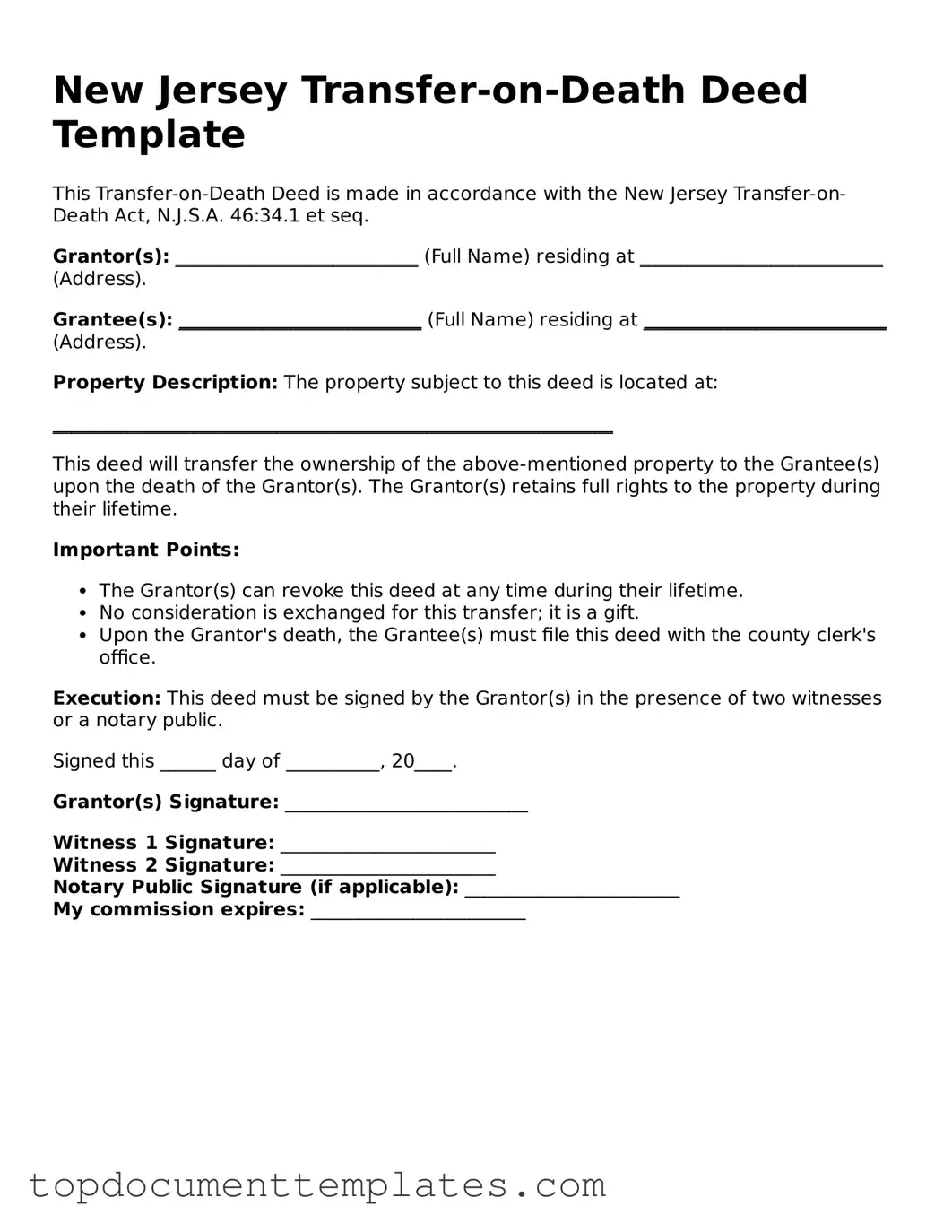In New Jersey, property owners have a valuable tool at their disposal known as the Transfer-on-Death Deed form. This form allows individuals to pass their real estate directly to designated beneficiaries without the need for probate, simplifying the process of transferring ownership upon death. By filling out this deed, property owners can specify who will inherit their property, ensuring that their wishes are honored. The Transfer-on-Death Deed is particularly beneficial for those looking to avoid the complexities and costs associated with probate court. It is important to note that the transfer only takes effect upon the owner's death, allowing them to retain full control of the property during their lifetime. Additionally, this deed can be revoked or altered at any time before the owner's passing, providing flexibility and peace of mind. Understanding how to properly execute this form can make a significant difference in estate planning, making it essential for New Jersey residents to consider this option seriously.
